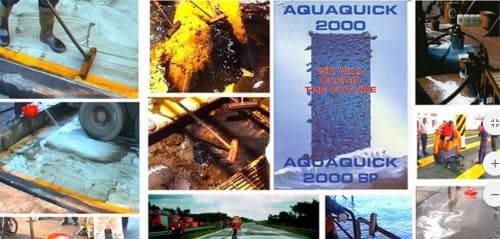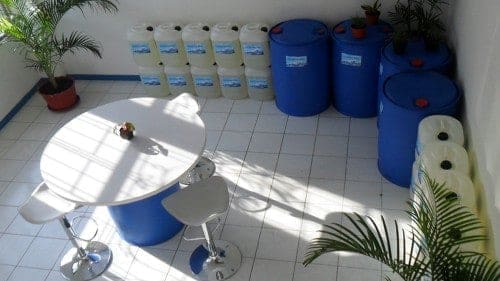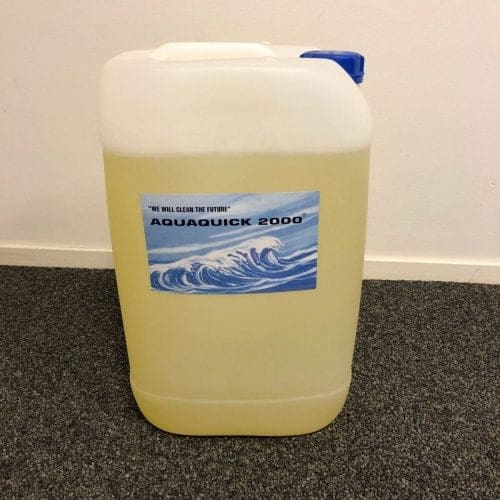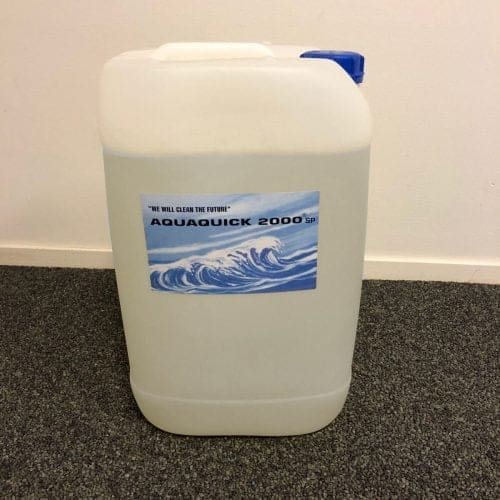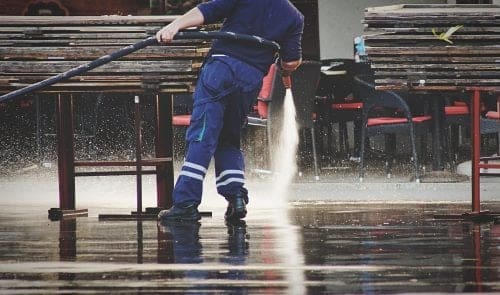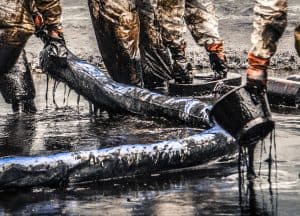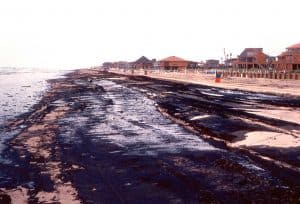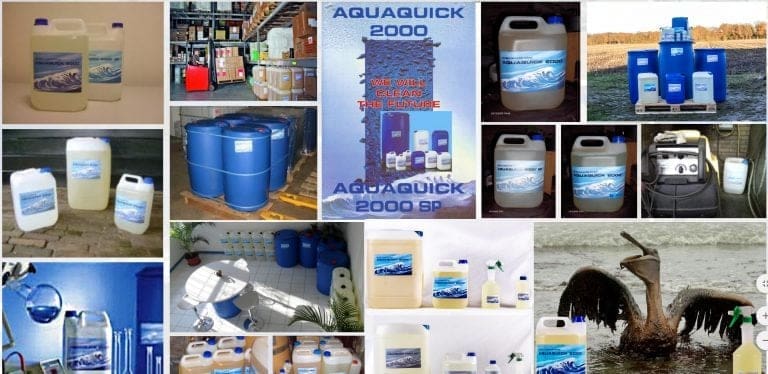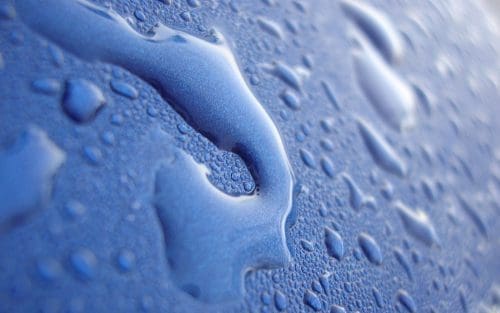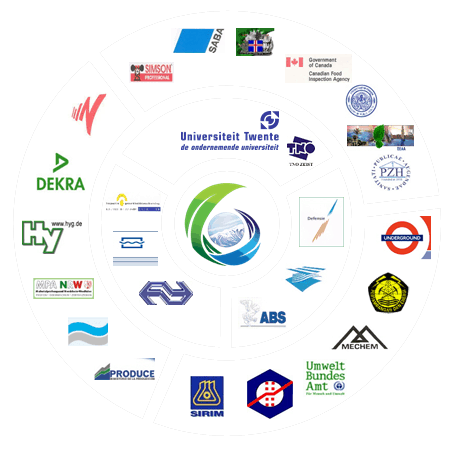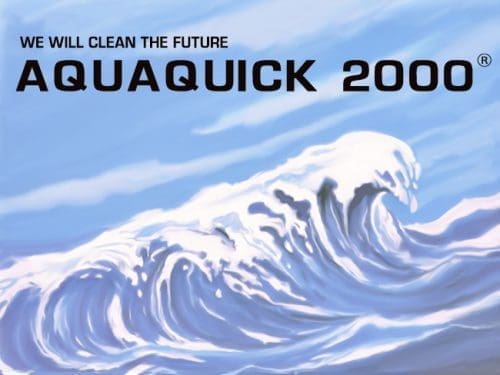Los vertidos de petróleo suponen una importante amenaza para el medio marino, las economías locales y la fauna y flora silvestres, por eso necesitamos una solución rápida para los vertidos de petróleo. Una actuación rápida y decisiva es esencial para mitigar los daños causados por estas catástrofes medioambientales. En este artículo, exploraremos la importancia de una respuesta rápida, los diversos métodos utilizados en la solución de vertidos de petróleo y cómo estas estrategias pueden minimizar los efectos adversos de los vertidos de petróleo.
La importancia de una respuesta rápida
Cuando se produce un vertido de petróleo, el reloj empieza a correr. Cuanto antes se pueda contener y limpiar el vertido, menos daños causará. Una respuesta rápida es crucial porque el petróleo se extiende rápidamente y afecta a zonas más extensas del océano y la costa. Actuando con rapidez, los intervinientes pueden limitar la propagación y reducir el impacto ambiental y económico.
Tácticas de respuesta inicial
La respuesta inicial a un vertido de petróleo es crítica. Esta fase implica una evaluación rápida y una actuación inmediata para contener el vertido. Las tácticas clave para solucionar un vertido de petróleo incluyen:
1. Plumas
Las barreras flotantes se utilizan para contener la propagación del petróleo en la superficie del agua. Los equipos de respuesta despliegan las barreras rápidamente para rodear el vertido y evitar que llegue a las costas y hábitats sensibles. Hay tres tipos principales de barreras:
- Barreras de contención: Se utilizan para acorralar el aceite y mantenerlo en una zona.
- Barras absorbentes: Éstas absorben el aceite, impidiendo que se extienda.
- Booms de fuego: Se utilizan en quemas controladas para eliminar el petróleo de la superficie del agua.
2. Desnatadores
Los skimmers son dispositivos que eliminan el aceite de la superficie del agua. Los hay de varios tipos: desnatadores de presa, desnatadores oleofílicos y desnatadores de succión. Al retirar el petróleo del agua, los intervinientes pueden evitar que se hunda o se disperse.
3. Dispersantes
Los dispersantes son productos químicos rociados en vertido y funcionan como una gran solución contra los vertidos de petróleo para romper el petróleo en gotas más pequeñas, favoreciendo la biodegradación natural. Aunque los dispersantes pueden ser controvertidos debido a su posible impacto ambiental, pueden ser eficaces para reducir la cantidad de petróleo que llega a las costas y los ecosistemas sensibles.
Estrategias avanzadas de respuesta a vertidos de petróleo
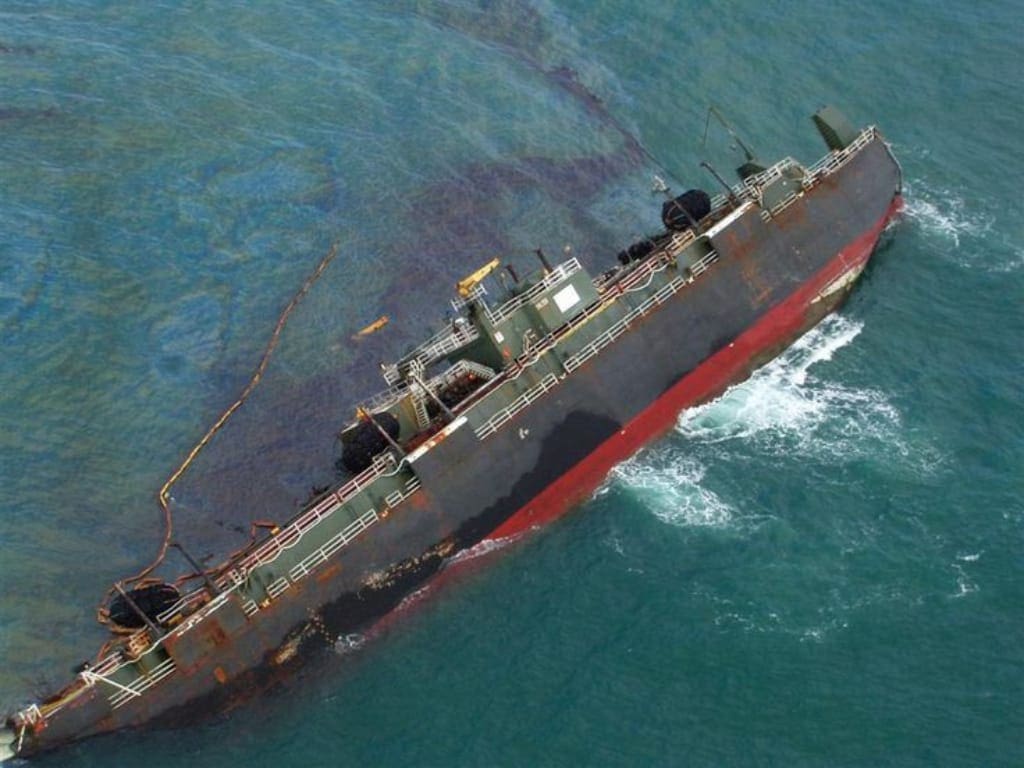
Además de las tácticas de respuesta inicial, se emplean estrategias avanzadas para garantizar una limpieza a fondo y minimizar los daños a largo plazo con el fin de encontrar una solución fácil pero eficaz al vertido de petróleo. Estas estrategias de solución de derrames de petróleo incluyen:
1. Quema in situ
La incineración in situ consiste en prender fuego al petróleo en la superficie del agua, con lo que se eliminan grandes cantidades de hidrocarburos. Este método se utiliza cuando los hidrocarburos son lo bastante espesos como para mantener una combustión y cuando las condiciones permiten una combustión controlada. Quema in situ puede reducir significativamente la cantidad de aceite que es necesario eliminar físicamente.
2. Biorremediación
La biorremediación utiliza microorganismos para descomponer el petróleo en sustancias menos nocivas. Este proceso natural puede mejorarse añadiendo nutrientes y oxígeno para estimular la actividad microbiana. La biorremediación es especialmente útil para limpiar la solución de los vertidos de petróleo en las costas y marismas, donde los métodos mecánicos pueden ser menos eficaces.
3. Agentes químicos de pastoreo
Se utilizan agentes químicos para espesar el petróleo y facilitar su contención y recogida. Estos agentes actúan reduciendo la tensión superficial del petróleo, lo que permite que forme una capa más gruesa que se puede desespumar o quemar más fácilmente.
Solución a la marea negra: El papel de la tecnología en la respuesta rápida
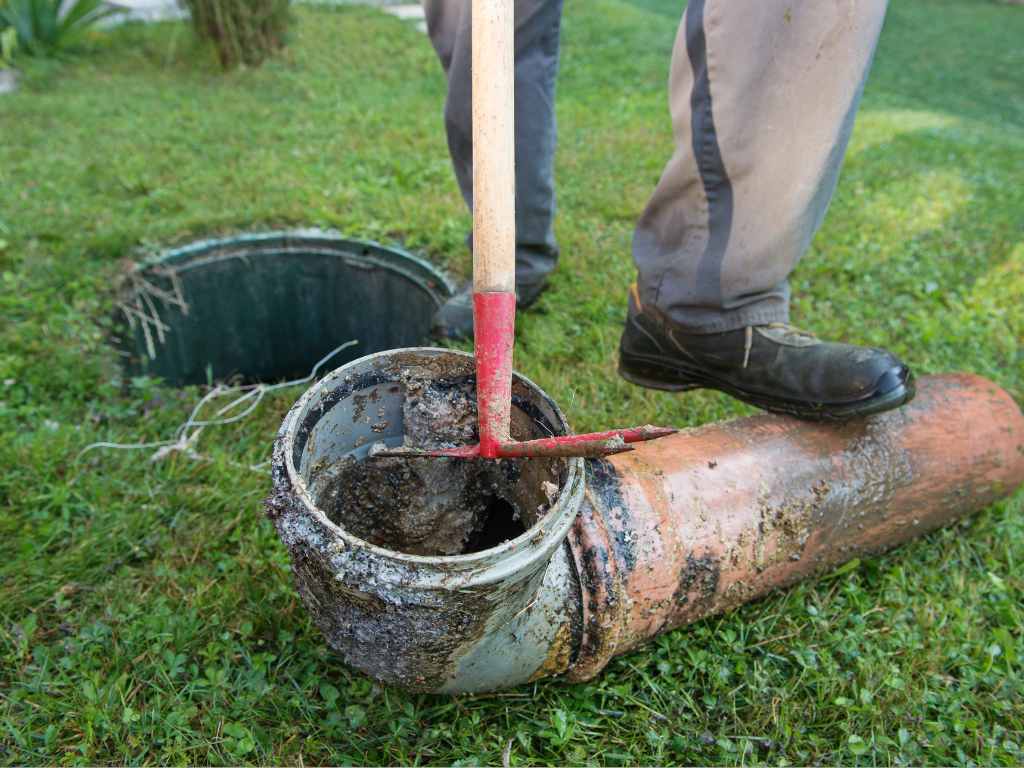
Los avances tecnológicos desempeñan un papel crucial en la mejora de la rapidez y eficacia de las respuestas a los vertidos de petróleo. Las innovaciones en las tecnologías de detección, contención y limpieza han mejorado significativamente la capacidad de respuesta rápida para llevar a cabo buenas soluciones a los vertidos de petróleo.
1. Drones e imágenes por satélite
Los drones y los satélites se utilizan para evaluar y supervisar rápidamente las soluciones a los vertidos de petróleo. Estas tecnologías proporcionan datos en tiempo real sobre el alcance y la ubicación del vertido, lo que permite a los equipos de respuesta desplegar los recursos con mayor eficacia. Los drones también pueden equiparse con sensores para detectar el espesor y la composición del petróleo.
2. Vehículos submarinos autónomos (AUV)
Los AUV se utilizan para vigilar los penachos de petróleo submarinos y evaluar el impacto de los vertidos en los ecosistemas marinos. Estos vehículos pueden funcionar en condiciones adversas y proporcionan datos valiosos sobre el movimiento y la dispersión de la solución del vertido de petróleo.
3. Robots desnatadores
Los skimmers robotizados son dispositivos autónomos o manejados a distancia que pueden eliminar eficazmente el petróleo de la superficie del agua. Estos skimmers están equipados con sensores y cámaras para navegar y optimizar sus operaciones de limpieza.
El factor humano: Formación y preparación para la solución de vertidos de petróleo
Aunque la tecnología es crucial, la eficacia de la respuesta a los vertidos de petróleo depende en última instancia del factor humano. Una formación y una preparación adecuadas son esenciales para garantizar una respuesta rápida y eficaz a la hora de llevar a cabo la solución al vertido de petróleo.
1. Simulacros y ejercicios regulares
La realización periódica de simulacros y ejercicios ayuda a los equipos de respuesta a estar preparados para situaciones reales. Estos simulacros simulan soluciones ante vertidos de petróleo y ponen a prueba la eficacia de las estrategias de respuesta, lo que permite a los equipos identificar áreas de mejora.
2. Programas de formación
Los completos programas de formación para el personal de respuesta garantizan que estén familiarizados con las últimas técnicas y tecnologías de respuesta a vertidos de petróleo. La formación abarca desde el despliegue correcto de barreras y skimmers hasta el uso de herramientas avanzadas de detección y control.
3. Coordinación y comunicación
La coordinación y la comunicación eficaces son fundamentales para el éxito de la respuesta. Los equipos de respuesta deben colaborar estrechamente con los organismos gubernamentales, las organizaciones medioambientales y las comunidades locales para garantizar un esfuerzo coordinado. Establecer canales y protocolos de comunicación claros ayuda a agilizar el proceso de respuesta.
Estudios de casos: Éxito de la respuesta rápida
El examen de las soluciones dadas en el pasado a los vertidos de hidrocarburos ofrece valiosos datos sobre la eficacia de las estrategias de respuesta rápida. A continuación se presentan dos estudios de casos de éxito en la respuesta rápida:
1. Deepwater Horizon (2010)
El vertido de Deepwater Horizon en el Golfo de México es uno de los mayores vertidos de petróleo de la historia. La respuesta inicial consistió en desplegar barreras, skimmers y dispersantes para contener la solución del vertido de petróleo. También se recurrió a la quema in situ para eliminar grandes cantidades de petróleo. La respuesta puso de relieve la importancia de actuar con rapidez y la necesidad de mejorar las tecnologías y la preparación.
2. Exxon Valdez (1989)
El vertido del Exxon Valdez en Alaska dio lugar a importantes avances en las estrategias de respuesta a los vertidos de petróleo. La respuesta inicial incluyó el despliegue de barreras y skimmers, pero la ubicación remota y las duras condiciones meteorológicas plantearon problemas. El vertido impulsó el desarrollo de nuevas tecnologías y normas más estrictas para prevenir futuros vertidos y mejorar la respuesta.
Beneficios medioambientales y económicos de la respuesta rápida
La respuesta rápida a los vertidos de petróleo no sólo protege el medio ambiente, sino que también ofrece importantes beneficios económicos. Al contener y limpiar rápidamente los vertidos, los equipos de respuesta pueden minimizar el impacto en las economías locales, sobre todo en sectores como la pesca y el turismo.
1. Proteger la vida y los ecosistemas marinos
Los vertidos de petróleo pueden devastar la vida y los ecosistemas marinos y requieren una solución rápida. Los esfuerzos de respuesta rápida ayudan a proteger los hábitats sensibles y a reducir el impacto a largo plazo sobre la vida salvaje. Contener el vertido rápidamente impide que el petróleo se extienda a zonas de gran biodiversidad, preservando la vida marina y la salud del ecosistema.
2. Reducción de los costes de limpieza
Cuanto más tiempo pasa sin que se contenga un vertido de petróleo, más cara resulta la limpieza. Una respuesta rápida puede reducir significativamente el coste total de la limpieza al evitar la propagación del petróleo y minimizar los daños. Este ahorro de costes beneficia tanto a las partes responsables como a las comunidades afectadas.
3. Mantener la confianza pública
Una respuesta eficaz y rápida a los vertidos de petróleo contribuye a mantener la confianza del público en las partes y autoridades responsables. Una comunicación transparente y unos esfuerzos visibles para hacer frente al vertido demuestran el compromiso con la protección del medio ambiente y el bienestar de la comunidad.
AQUAQUICK 2000: Una revolucionaria solución de limpieza respetuosa con el medio ambiente
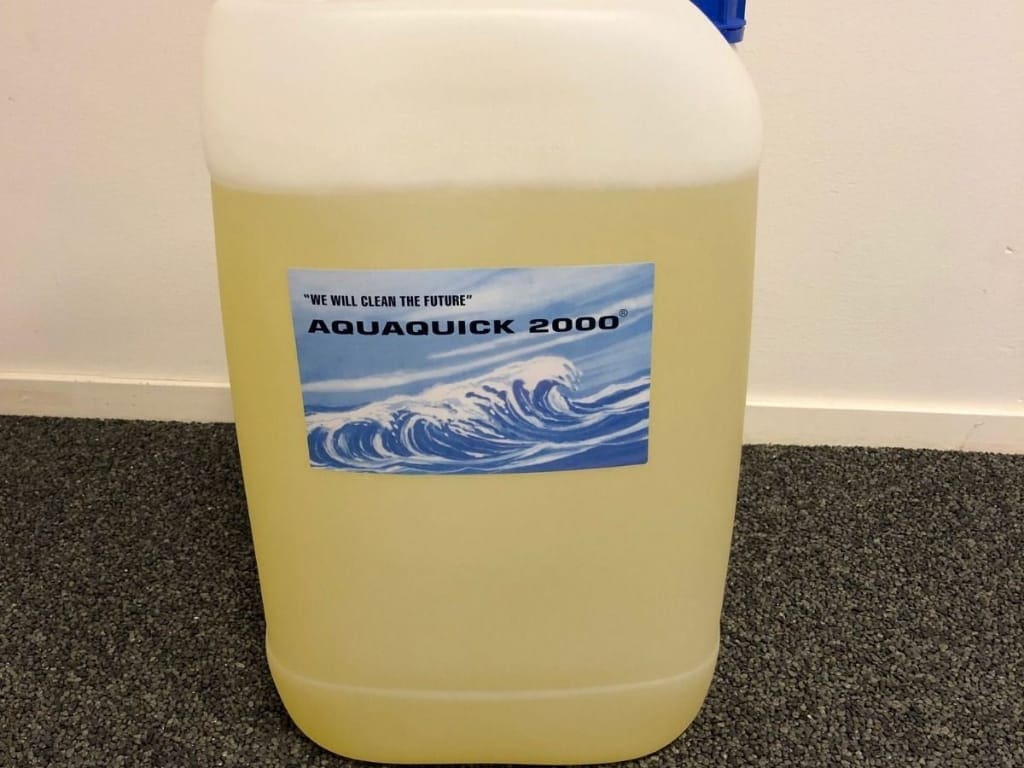
En el mundo moderno, la sostenibilidad medioambiental se ha convertido en una preocupación acuciante. Las industrias buscan constantemente formas de reducir su huella ecológica, y un área importante de interés es la limpieza de derrames de aceites y grasas. AQUAQUICK 2000 destaca como un revolucionario producto de limpieza de base acuosa que ofrece una solución ecológica para la eliminación de diversos tipos de aceites y grasas. Compuesto por materiales ecológicos y extractos de plantas, AQUAQUICK 2000 no sólo limpia eficazmente, sino que también fomenta la salud del medio ambiente gracias a sus innovadores procesos biológicos.
Composición y mecanismo
Materiales ecológicos y extractos vegetales
AQUAQUICK 2000 está elaborado a partir de una mezcla de materiales ecológicos y extractos de plantas. Esta composición garantiza que el producto sea biodegradable y no tóxico, por lo que puede utilizarse en diversos entornos sin causar daños a los ecosistemas ni a la salud humana. A diferencia de los limpiadores químicos convencionales, que pueden dejar residuos nocivos y contribuir a la contaminación, AQUAQUICK 2000 se descompone de forma natural, minimizando su impacto medioambiental.
Hidrocarburos
Una de las características más notables de AQUAQUICK 2000 es su eficacia contra una amplia gama de aceites y grasas. Esto incluye aceites y grasas animales, vegetales, sintéticos y minerales, conocidos colectivamente como hidrocarburos. Los hidrocarburos son notoriamente difíciles de limpiar debido a su persistencia y potencial de daño medioambiental. La formulación de AQUAQUICK 2000 está específicamente diseñada para emulsionar estas sustancias, facilitando su eliminación de forma respetuosa con el medio ambiente.
El proceso biológico
Aumento de la actividad microbiana
AQUAQUICK 2000 contiene nutrientes especiales que estimulan el crecimiento de bacterias y microorganismos presentes en el medio ambiente. Estos microorganismos son naturalmente expertos en la descomposición de hidrocarburos, pero a menudo necesitan nutrientes adicionales para prosperar. Al proporcionar estos nutrientes, AQUAQUICK 2000 promueve un crecimiento explosivo de bacterias beneficiosas, aumentando su capacidad para metabolizar los hidrocarburos.
Descomposición aeróbica
El proceso de descomposición facilitado por AQUAQUICK 2000 es aeróbico, lo que significa que requiere la presencia de oxígeno. Durante este proceso, las bacterias convierten la emulsión de AQUAQUICK/hidrocarburos en subproductos inocuos como dióxido de carbono (CO2), agua (H2O), biomasa y energía. Este proceso de biodegradación natural garantiza que los hidrocarburos se descompongan de forma eficaz y segura, sin dejar residuos tóxicos.
Aplicaciones y ventajas
Uso versátil
AQUAQUICK 2000 Su versatilidad lo hace adecuado para una amplia gama de aplicaciones. Puede utilizarse en entornos industriales para limpiar maquinaria y equipos, en entornos marinos para hacer frente a vertidos de petróleo y en contextos cotidianos como la limpieza doméstica. Su capacidad para tratar distintos tipos de hidrocarburos garantiza que pueda satisfacer diversas necesidades de limpieza sin comprometer su eficacia.
Impacto medioambiental
Una de las principales ventajas de AQUAQUICK 2000 es su mínimo impacto ambiental. Los productos de limpieza tradicionales suelen contener productos químicos agresivos que pueden dañar la vida acuática y contaminar las fuentes de agua. Por el contrario, la composición natural y las propiedades biodegradables de AQUAQUICK 2000 garantizan el equilibrio ecológico. Al promover el crecimiento de bacterias que descomponen de forma natural los hidrocarburos, AQUAQUICK 2000 contribuye a mantener unos ecosistemas más limpios y saludables.
Seguridad y no toxicidad
La seguridad es otra ventaja significativa de AQUAQUICK 2000. Su fórmula no tóxica significa que es seguro para su uso en diversos entornos, incluidas las zonas donde hay seres humanos y animales. Esto lo convierte en la opción ideal para aplicaciones de limpieza en zonas sensibles, como parques marinos, reservas naturales y zonas residenciales. Los usuarios pueden confiar en que no están introduciendo productos químicos nocivos en su entorno.
Casos prácticos y eficacia
Aplicaciones industriales
En entornos industriales, AQUAQUICK 2000 ha demostrado ser muy eficaz en la limpieza de aceites y grasas de maquinaria y equipos. Por ejemplo, las plantas de fabricación que trabajan con aceites y grasas pesados han informado de mejoras significativas en la limpieza y la eficiencia operativa después de cambiar a AQUAQUICK 2000. La capacidad del producto para descomponer los hidrocarburos de forma rápida y segura se traduce en menos tiempo de inactividad para el mantenimiento de los equipos y un menor riesgo de contaminación ambiental.
Vertidos marinos de petróleo
Los vertidos marinos de petróleo presentan un desafío único debido a la naturaleza vasta y sensible del entorno oceánico. AQUAQUICK 2000 se ha utilizado con éxito en varias situaciones de vertidos marinos de petróleo para contener y limpiar vertidos. Su rápida acción para emulsionar el petróleo y promover la degradación microbiana ayuda a minimizar el impacto medioambiental a largo plazo de los vertidos de petróleo. Además, su naturaleza no tóxica garantiza que la vida marina no se vea afectada negativamente durante el proceso de limpieza.
Perspectivas de futuro
Innovación y desarrollo
A medida que aumente la concienciación sobre la sostenibilidad medioambiental, es probable que aumente la demanda de soluciones de limpieza ecológicas como AQUAQUICK 2000. Los esfuerzos de investigación y desarrollo en curso tienen como objetivo mejorar aún más la eficacia y aplicabilidad del producto. Las innovaciones pueden incluir la optimización de la mezcla de nutrientes para apoyar una gama más amplia de actividad microbiana y el desarrollo de formulaciones adaptadas a tipos específicos de hidrocarburos.
Ampliar las aplicaciones
Las aplicaciones potenciales de AQUAQUICK 2000 van más allá de sus usos actuales. Es posible que en el futuro el producto se adapte para su uso en la recuperación de suelos, donde podría ayudar a limpiar zonas de tierra contaminadas. Además, podría utilizarse en instalaciones de tratamiento de aguas para combatir la contaminación por hidrocarburos en las aguas residuales. La versatilidad y eficacia de AQUAQUICK 2000 lo convierten en un candidato prometedor para abordar diversos retos de limpieza medioambiental.
AQUAQUICK 2000 representa un avance significativo en la tecnología de limpieza ecológica. Su composición única de materiales ecológicos y extractos de plantas, combinada con su capacidad para promover la degradación microbiana de los hidrocarburos, lo convierten en una herramienta inestimable en la lucha contra la contaminación ambiental. Al ofrecer una solución segura, eficaz y sostenible para la limpieza de aceites y grasas, AQUAQUICK 2000 no sólo satisface las necesidades actuales de limpieza, sino que también favorece la salud medioambiental a largo plazo.
A medida que las industrias y las comunidades siguen dando prioridad a la sostenibilidad, productos como AQUAQUICK 2000 desempeñará un papel crucial a la hora de garantizar entornos más limpios y saludables. Con su eficacia demostrada y su compromiso con la seguridad ecológica, AQUAQUICK 2000 establece un nuevo estándar para las soluciones de limpieza medioambiental.
Conclusión
Una respuesta rápida es esencial para mitigar los daños causados por los vertidos de petróleo y encontrar soluciones. Una actuación rápida, combinada con tecnologías avanzadas y equipos de respuesta bien formados, puede reducir significativamente el impacto medioambiental y económico de estas catástrofes. Dando prioridad a la prevención, la preparación y la actuación rápida, podemos proteger mejor nuestros océanos y costas de los efectos devastadores de los vertidos de petróleo.
La aplicación de estrategias sólidas de respuesta a los vertidos de petróleo y la mejora continua de nuestras capacidades garantizan que estemos mejor equipados para hacer frente a futuros vertidos. En última instancia, un enfoque proactivo y de respuesta rápida es clave para salvaguardar nuestro medio ambiente y preservar la salud de nuestro planeta.

